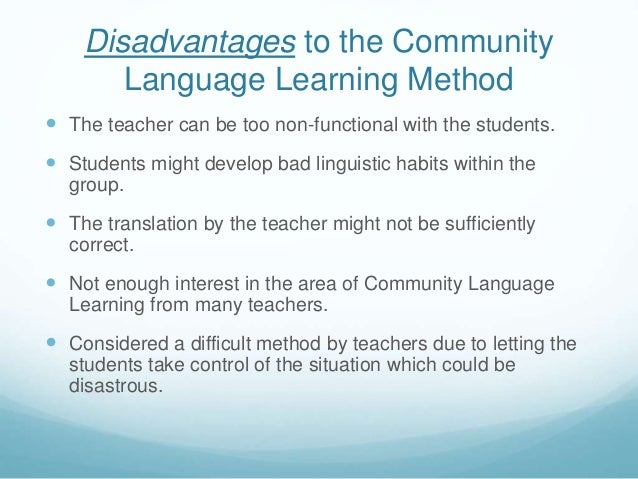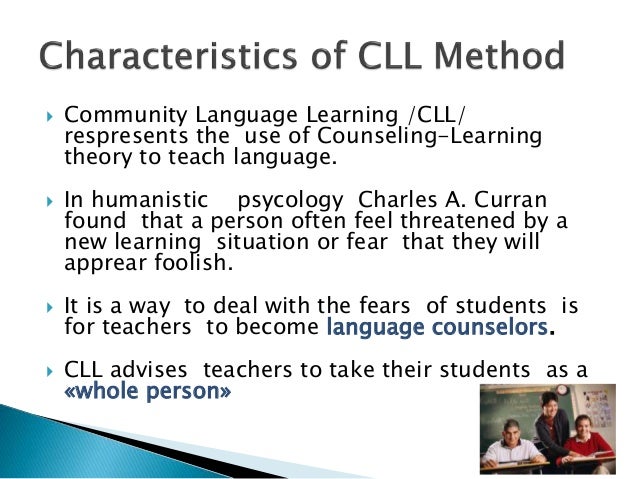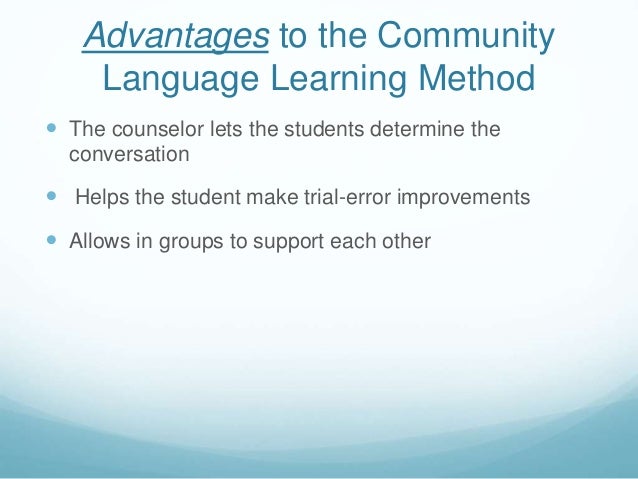Community language learning (CLL)
Community language learning (CLL) is a language-teaching method[1] in which students work together to develop what aspects of a language they would like to learn. It is based on the Counselling-approach in which the teacher acts as a counsellor and a paraphraser, while the learner is seen as a client and collaborator.The CLL emphasizes the sense of community in the learning group, it encourages interaction as a vehicle of learning, and it considers as a priority the students' feelings and the recognition of struggles in language acquisition. There is no syllabus or textbook to follow and it is the students themselves who determine the content of the lesson by means of meaningful conversations in which they discuss real messages. Notably, it incorporates translation, transcription, and recording techniques.
Background
The CLL approach was developed by Charles Arthur Curran, a Jesuit priest,[2] professor of psychology at Loyola University Chicago, and counseling specialist.[3] This method refers to two roles: that of the know-er (teacher) and student (learner). Also the method draws on the counseling metaphor and refers to these respective roles as a counselor and a client. According to Curran, a counselor helps a client understand his or her own problems better by 'capturing the essence of the clients concern ...[and] relating [the client's] affect to cognition...;' in effect, understanding the client and responding in a detached yet considerate manner.To restate, the counselor blends what the client feels and what he is learning in order to make the experience a meaningful one. Often, this supportive role requires greater energy expenditure than an 'average' teacher.[4]
Natural approach
The foreign language learner's tasks, according to CLL are (1) to apprehend the sound system of the language (2) assign fundamental meanings to individual lexical units and (3) construct a basic grammar.
There are 5 stages of development in this method.
- “Birth” stage: feeling of security and belonging are established.
- As the learners' ability improve, they achieve a measure of independence from the parent.
- Learners can speak independently.
- The learners are secure enough to take criticism and being corrected.
- The child becomes an adult and becomes the know-er.



Tidak ada komentar:
Posting Komentar